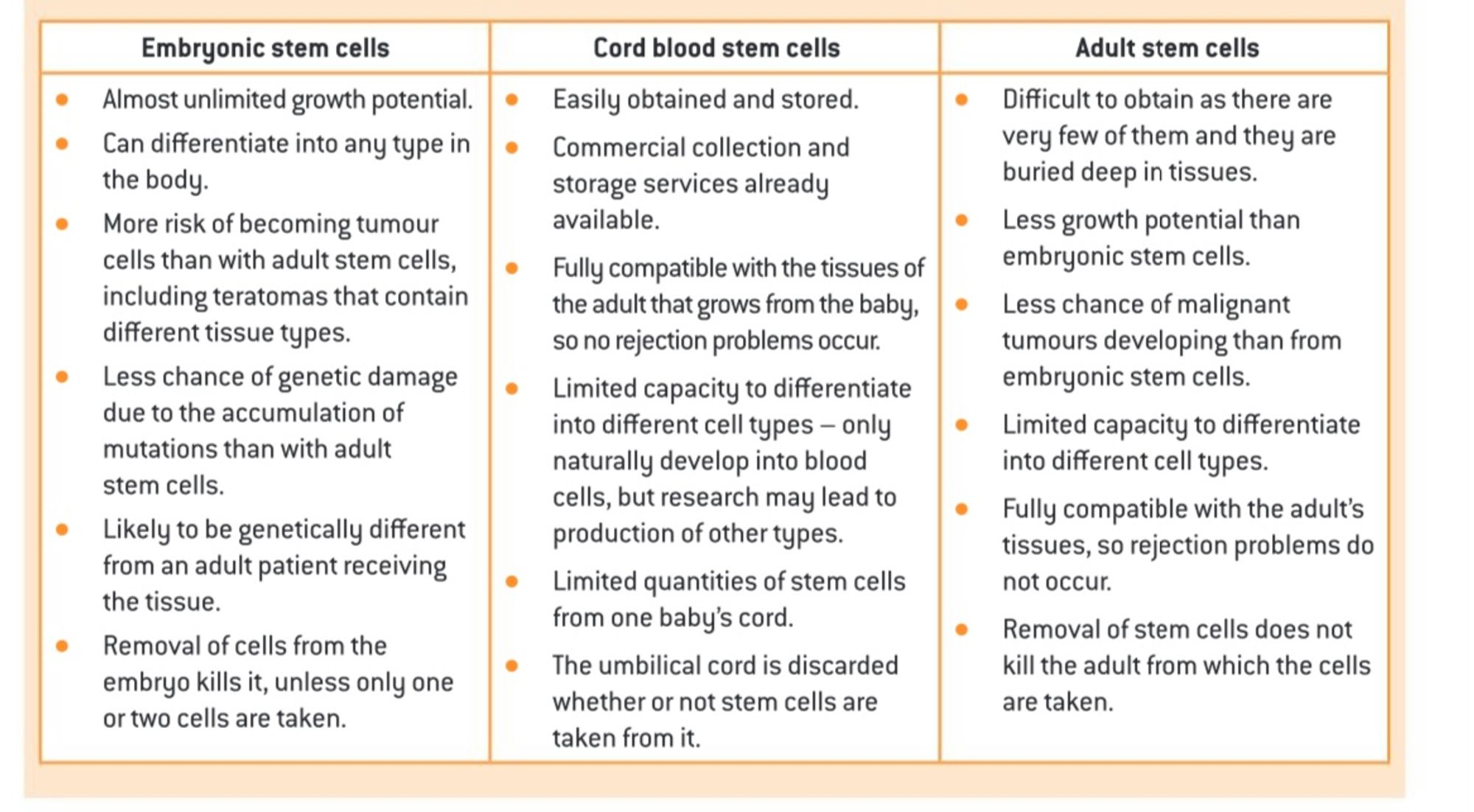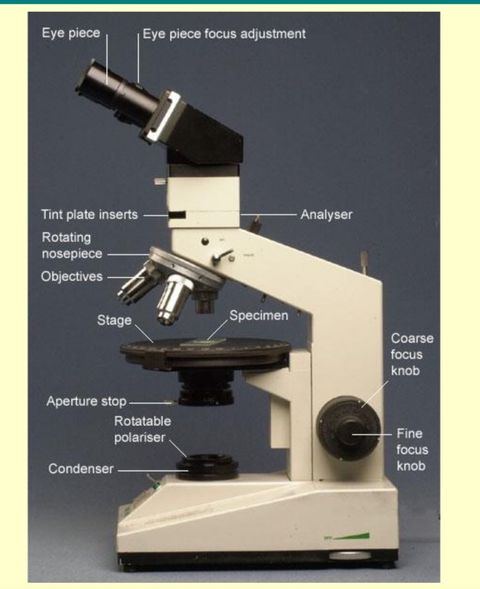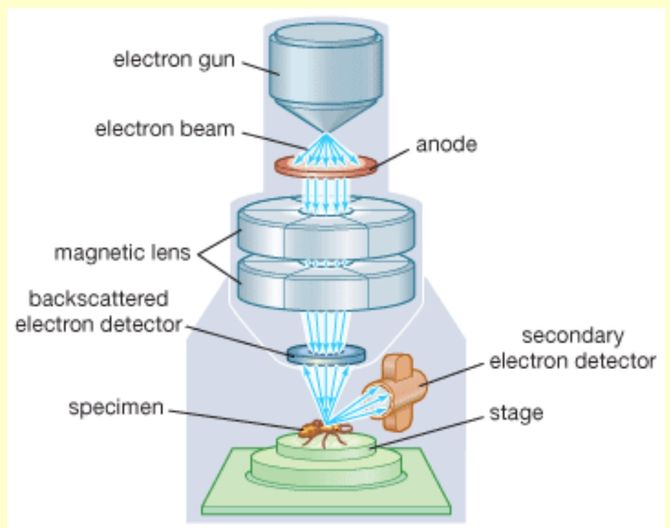Introduction of cells
The Cell Theory
- living organisms are composed of cells
Discrepancies (exceptions to the cell theory)
- organisms or parts of organisms that do not consist of typical cells.
Organisms consisting of only one cell carry out all functions of life in that cell.
- Metabolism: chemical reactions inside the cell, including the cell respiration to release energy
- Reproduction: producing offspring either sexually or asexually
- Growth: an irreversible increase in size
- Response: the ability to react to changes in the environment
- Excretion: getting rid of the waste products of metabolism
- Nutrition: obtaining food, to provide energy and the materials needed for growth
- Homeostasis: keeping conditions inside the organism within tolerable limits
Limitations on cell size
The surface area to volume ratio is important in the limitation of cell size.
- Substances move into and out of cells through the plasma membrane at the surface of the cell rate of substances across the membrane depends on SA
- if the ratio is small (elephant):
- substances will not enter the cell as quickly as they are required
- waste products will accumulate because they are produced more rapidly than excreted
- cells may overheat because the metabolism produces heat faster than it is lost over the cell surface
Multicellular Organisms
Multicellular organisms have properties that emerge from the interaction of their cellular components.
- organisms consisting of a single mass of cells, fused together, are multicellular
- example of a multicellular organism: Caenorhabditis elegans
- the adult body is 1mm long and is made up of exactly 959 cells.
- it feeds on the bacteria that cause decomposition
- has a mouth, pharynx, intestine, and anus
- hermaphrodite (contains both male and female reproductive organs
- has neurons
Emergent properties
- individual cells in a group can organize themselves and interact with each other to form a living organism with distinctive overall properties. (1+1>2)
- properties that arise from the interaction of component parts
Cell differentiation in multicellular organisms
Specialized tissues can develop by cell differentiation in multicellular organisms.
- the development of cells in different ways performs different functions
- a group of cells specialize in the same way to perform the same function is called tissue
- becoming specialized makes the cell more efficient than they had many different roles
- thus multicellular organisms are able to carry out multiple and complex functions because different cells responsible for different jobs
Gene expression and cell differentiation
Differentiation involves the expression of some genes and not others in a cell's genome
-
- differentiated cells get exactly the same set of genes
- 25000 genes in the human genome are all present in every body cell
- gene is being expressed means gene is being used, which can switch specific gene to make a protein or other gene product
- cell differentiation happens because a different sequence of genes is expressed in different cell types
Stem cells
The capacity of stem cells to divide and differentiate along different pathways is necessary for embryonic development. It also makes stem cells suitable for therapeutic uses.
- stem cells can divide again and again to produce copious quantities of new cells, therefore they are useful for the growth of tissues or the replacement of cells that have been lost or damaged
- Stem cells are not fully differentiated. They can differentiate into different cell types. Scientists now add cytokines to ESCs to make them differentiate into the specific cell type
- 2 characteristics
- self-renewal: the ability tounmergo numerous cycles of cell division while maintaining an unspecialized state
- potency: the ability to differentiate into specialized cells
Totipotent (zygote) = can develop into any type of cell;
Pluripotent (embryonic stem cell) = can develop into most types of cells;
Multipotent (adult stem cell...) = can develop into a restricted range of cells;
Unipotent = can develop into one type of cell
- Stargardt's macular dystrophy
- the genetic disease develops in children between 6-12
- Caused by the death of photoreceptor cells in the central portion of the retina called the macula.
- The macula is responsible for sharp central vision — for tasks like reading, watching television, and looking at faces. It is also important for color vision.
- Symptoms are reduced central vision and reduced color vision, side vision is usually kept
Magnification
image size = actual size ✖️ magnification
About Microscope
SI unit
Resolution - the ability to distinguish between two separate objects depends on the wavelength of EM radiation used
Light Microscopes
Transmission Electron Microscope
-
The specimen must be kept in a vacuum – air molecules would collide with electrons.
-
Dense parts of the specimen absorb electrons – heavy metal stains increase the density gradient.
-
The image is viewed on a screen or focussed onto photographic film to produce an electron micrograph.
-
Advantages
-
Very high resolution (0.5 nm)
-
-
Disadvantages
-
The specimen must be dead. Specimen deteriorates. Preparation may damage the specimen. Preparation is difficult & time-consuming. Very expensive.
-
Scanning Electron Microscope
The Electron beam is scanned across the surface of the specimen, electrons are reflected and collected.
Forms a 3D image on a cathode ray tube.
The image is viewed on a screen or focussed onto photographic film to produce an electron micrograph.
-
Advantages
-
Excellent 3D images.
-
Surface structures are shown.
-
Larger samples can be examined.
-
-
Disadvantages
-
Same as TEM. The resolution is only 5 – 20 nm.
-
Light vs. Electron
- EM’s have a much greater resolution so are used to investigate the ultrastructure of a cell.
- LMs are used to get an overall picture. They are also much quicker, easier, and cheaper to use and can be used to view living specimens.






No Comments